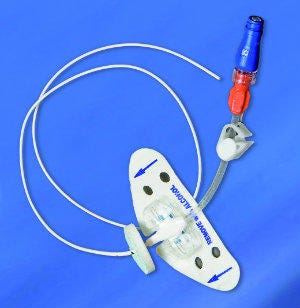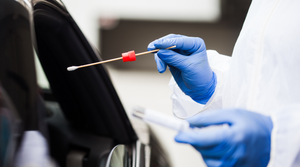How Microtechnology Is Driving Advances in MedTech
January 21, 2014
Biodegradable implants and antimicrobial coatings are but some of the results of the medical device materials innovations taking place at sizes that are less than a millionth or a billionth of a meter.
That is one of the major takeaways from Thomas Dietrich, PhD, CEO of the IVAM Microtechnology Network (Dortmund, Germany). The organization makes it its business to stay on the cutting edge of advances in microtechnology (involving less than one micrometer), nanotechnology (involving sizes in the nanometers), and advanced materials. The organization, which counts roughly 300 companies and research institutes as members, collaborates frequently with the medical device industry to find applications for microtechnology breakthroughs. Approximately 70% of IVAM's member companies and institutes working in the medical market.
At MD&M West in Anaheim, CA, Dietrich will present a talk titled "Developing novel materials for medical devices" that summarizes recent advances in materials and explore the challenges of using novel materials in traditional product lines. Before working at IVAM, Dietrich founded and served as the CEO of Mikroglas Chemtech GmbH, a company specializing in microstructured glass and semiconductor materials.
Check out Dietrich's talk titled "Developing novel materials for medical devices" held Thursday, February 13 at MD&M West in Anaheim, CA. |
MPMN: What new materials for medical devices do you personally find the most exciting?
|
Thomas Dietrich, PhD will be delivering a talk titled "Developing novel materials for medical devices" at MD&M West in Anaheim, CA. |
Dietrich: A lot of materials are used in medical applications and products. You find metals as well as polymers or even glass and silicon; it simply depends on the product, how it is manufactured, what tolerances are necessary, or where it is used.
Most interesting are the new technologies for surface modification, which are being developed by some of our member companies:
Sensirion (Staefa, Switzerland; www.sensirion.com) produces flow, pressure, temperature, or humidity sensors that are biocompatible and can be used, for instance, in living organisms.
The Fraunhofer Institute IFAM (Bremen, Germany; www.ifam.fraunhofer.de) has developed biodegradable implants that work for a certain time in the human body, then "destroy" themselves and are naturally moved out of the body after use.
Our member Special Coating Systems (Clear Lake, WI; www.scscoatings.com) has developed special antimicrobial coatings that can be used, for instance, in hospitals to prevent infections.
MPMN: What impact do you foresee microtechnology having in the medical device field in the next 5 to 10 years?
Dietrich: Medical components and equipment are becoming more and more effective, and the field of diagnostics is growing more and more patient focused. This means that, in the future, results should come fast, wherever the patient is. We will not have to wait days or weeks for results from the laboratories. The measurement will take place at the doctor's office or even at home, with the results coming immediately.
To achieve this, it is very important to have small diagnostic units that are easy to carry, but very effective. For this, microtechnological products are essential.
This is only one example. Also in fields like minimally invasive surgeries or specialized implants, microtechnology is now playing an important role and will do so in the future.
MPMN: Nanotechnology could have the potential to be used for everything from targeted drug-delivery to antimicrobial coatings for devices. Which applications of nanotechnology do you find the most promising?
Dietrich: As answered to the first question: the most promising use of nanotechnology is the modification of surfaces, especially for making them antimicrobial or biocompatible. This opens doors for a large number of applications for microsystems, which normally could not be used in human bodies.
MPMN: What advice would you give to medical device companies evaluating new materials for use in their products?
Dietrich: To find the right decision regarding the material's choice, the following questions have to be answered:
Can the material be micro-structured for the required application?
Is the material biocompatible or can it be made biocompatible by surface modification?
Is the whole production process (and with it the product itself) cost-effective?
MPMN: Any advice on convincing regulatory bodies like FDA that novel materials are safe?
|
The microRESIST coating from Specialty Coatings Systems has been shown to prove effective against 14 common microorganisms. |
Dietrich: First of all, involve regulatory bodies like [the] FDA as soon as possible. Ask them for their experience with the materials you want to use. In many cases, they already know from other applications that a given material can be used (or not). If this can be checked in advance, before you start expensive development processes, this could save a lot of money.
Surface modifications might help, if you want to use different materials. If you can prove that your surface will always have the same properties, no matter which material you use, authorities will accept new materials much easier. Of course, you have to be sure that the surface cannot be removed during the use of the product.
MPMN: Are there any novel new materials out there that worry you, that you would advise designers to avoid?
Dietrich: No.
MPMN: One of the biggest medical device nightmares in recent memory is the debut of metal-on-metal hip implants, which promised to offer improved durability over plastic based implants. In reality, the products didn't perform as expected in many patients, causing tissue damage and other adverse events. What advice would you give to device firms planning on using new materials in products to avoid such an outcome?
Dietrich: It is very difficult to give an advice for such a situation. The idea was to make the implants harder to minimize damage over time and increase the durability. This goal was achieved: the implants last much longer. But the material was so hard that it results in tissue damage. No one foresaw this. The pretests did not prove this result. Only a large number of users showed that there are problems.
Of course, you should test all medical devices carefully, before they are marketed. In most of the cases, you will see issues and can optimize your product.
About the Author(s)
You May Also Like




